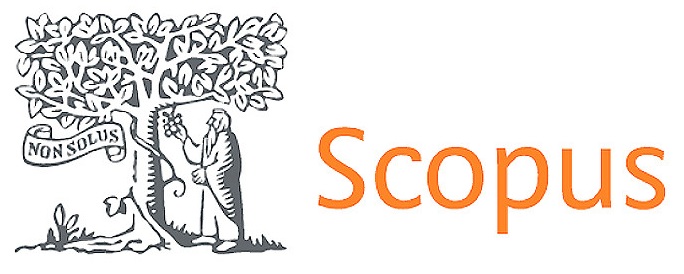Description of oral hygiene in visually impaired people in the city of Ibarra, Ecuador
DOI:
https://doi.org/10.56294/saludcyt2024928Keywords:
Braille Language, Oral Hygiene, Blind People, Tooth Brushing, People with DisabilitiesAbstract
People with visual impairment face challenges in maintaining optimal oral hygiene, as they may lack knowledge of proper oral cleaning techniques. The objective of the study was to describe oral hygiene in people with visual impairment in the city of Ibarra, Ecuador. It was an observational, prospective, cross-sectional and descriptive study. Surveys were conducted with 30 blind people from the Center for Specialized Therapeutic Attention for People with Disabilities (CATEPED) in the city of Ibarra, Ecuador. The findings revealed that there was a significant prevalence of oral problems among the population studied. Despite showing good oral hygiene in general, the lack of knowledge about the use of fluoride toothpaste and the need to replace toothbrushes periodically are aspects of concern. These results highlight the importance of implementing educational and dental care programs specifically designed for people with visual impairment in order to improve their oral health and prevent dental disease. The need for increased attention to the oral health of people with visual impairment is highlighted, as well as the importance of education and access to appropriate dental services. These results highlight the importance of implementing educational and dental care programs specifically designed for people with visual impairment in order to improve their oral health and prevent dental disease. The need for increased attention to the oral health of people with visual impairment is highlighted, as well as the importance of education and access to appropriate dental services. The results underscore the importance of addressing the specific needs of this population, both in terms of oral hygiene awareness and in the provision of tailored dental care. It is critical to develop comprehensive strategies that address existing barriers and promote optimal oral health for people with visual impairment
References
1. Menéndez de Lucas JA, Castell Navarro A. Permanent visual work disabilities: 321 cases review. Arch Soc Esp Oftalmol (Engl Ed). 2020 Mar;95(3):130-137. English, Spanish. doi: 10.1016/j.oftal.2019.12.013.
2. Maciag EJ, Martín-Noguerol T, Ortiz-Pérez S, Torres C, Luna A. Understanding Visual Disorders through Correlation of Clinical and Radiologic Findings. Radiographics. 2024 Feb;44(2):e230081. doi: 10.1148/rg.230081.
3. Macharia M, Masiga M, Psiwa N, Bermudez J, Seminario AL, Kemoli AM. Oral health status and hygiene practices among visually impaired adolescents from a school in Kenya. BMC Oral Health. 2023 Oct 7;23(1):725. doi: 10.1186/s12903-023-03428-7.
4. Ruiz M. Estado de la salud bucal de los pacientes con discapacidad visual del Centro Municipal de apoyo de Enero. Facultad Piloto de Odontología de la Universidad de Guayaquil. 2020.
5. Gómez C, Álvarez G, Fernández A, Castro F, Vega V, Comas R, Ricardo M. La investigación científica y las formas de titulación. Aspectos conceptuales y prácticos. Quito: Editorial Jurídica del Ecuador; 2017.
6. Gómez Armijos C, Vega Falcón V, Castro Sánchez F, Ricardo Velázquez M, Font Graupera E, Lascano Herrera C, et al. La función de la investigación en la universidad. Experiencias en UNIANDES. Quito: Editorial Jurídica del Ecuador; 2017.
7. Anguera T, Blanco A, Lozada J, Sánchez P. Integración de elementos cualitativos y cuantitativos en metodología observacional. Revista Internacional de Comunicación. 2020; 1(49).
8. Bagur S, Rosselló M, Paz B, Verger S. El enfoque integrador de la metodología mixta en la investigación educativa. Revista Electrónica de Investigación y Evaluación Educativa. 2021; 1(27).
9. Ramos Argilagos M, Valencia Herrera Á, Vayas Valdiviezo W. Evaluación de estrategias de educación nutricional en escuelas del Ecuador utilizando TOPSIS neutrosófico. Rev Int Cienc Neutrosóficas. 2022;18(3):208-217.
10. Jaramillo MN, Chuga ZN, Hernández CP, Lits RT. Análisis multicriterio en el ámbito sanitario: selección del sistema de triaje más adecuado para las unidades de atención de urgencias en Ecuador. Rev Investig Oper. 2022;43(3):316-324.
11. Prado Quilambaqui J, Reyes Salgado L, Valencia Herrera A, Rodríguez Reyes E. Estudio del cuidado materno y conocimientos ancestrales en el Ecuador con ayuda de mapas cognitivos neutrosóficos. Revista Investigación Operacional. 2022;43(3):340-348. Disponible en: https://rev-inv-ope.pantheonsorbonne.fr/sites/default/files/inline-files/43322-06.pdf
12. Alcaina Lorente Antonia, Saura López Virginia, Pérez Pardo Ana, Guzmán Pina Sonia, Cortés Lillo Olga. Salud oral: influencia de los estilos de vida en adolescentes. Rev Pediatr Aten Primaria [Internet]. 2020 Sep [citado 2024 Mar 19]; 22(87): 251-261. Disponible en: http://scielo.isciii.es/scielo.php?script=sci_arttext&pid=S1139-76322020000400005&lng=es. Epub 24-Ene-2022.
13. Crowder L. Is the oral health of visually impaired children and adolescents different compared to their sighted peers? Evid Based Dent. 2022 Sep;23(3):104-105. doi: 10.1038/s41432-022-0814-1.
14. Costa Silva-Freire L, Guimaraes MO, Abreu LG, Vargas-Ferreira F, Vieira-Andrade RG. Oral health issues in children and adolescents with vision impairment: A systematic review and meta-analysis. Int J Paediatr Dent. 2022 Nov;32(6):877-893. doi: 10.1111/ipd.12967.
15. Fantaye W, Nur A, Kifle G, Engida F. Oral health knowledge and oral hygiene practice among visually impaired subjects in Addis Ababa, Ethiopia. BMC Oral Health. 2022 May 6;22(1):167. doi: 10.1186/s12903-022-02199-x.
Published
Issue
Section
License
Copyright (c) 2024 Karina Reyes Espinoza, Helen López, Alejandro Jumbo, Milena Castillo (Author)

This work is licensed under a Creative Commons Attribution 4.0 International License.
The article is distributed under the Creative Commons Attribution 4.0 License. Unless otherwise stated, associated published material is distributed under the same licence.



